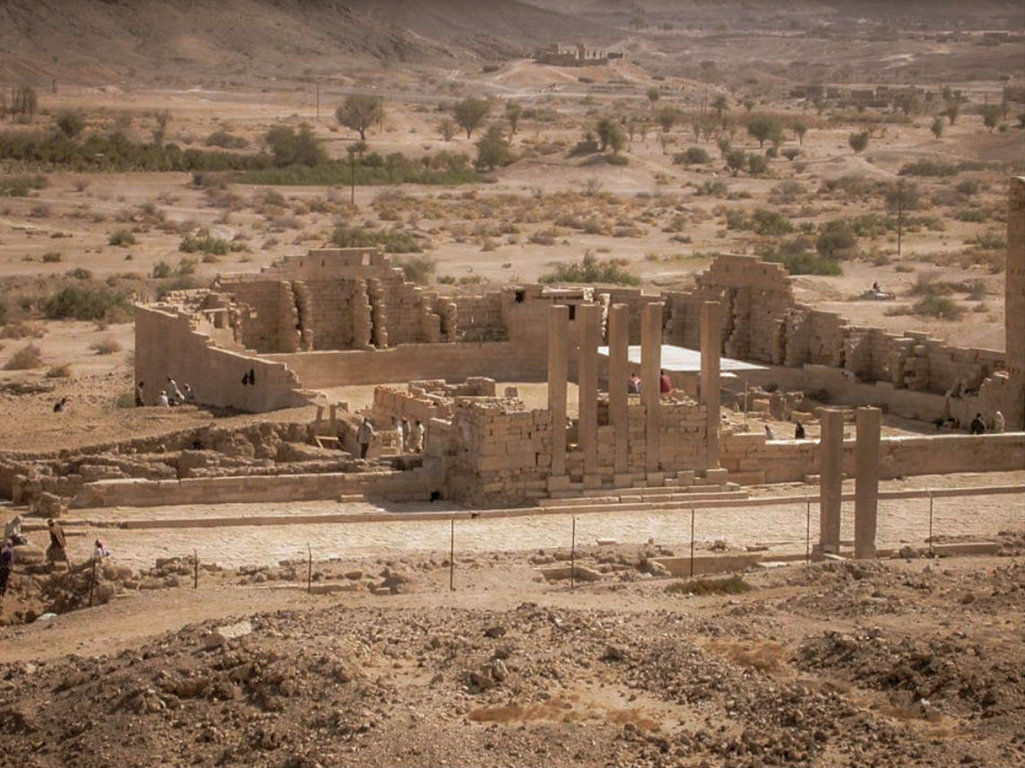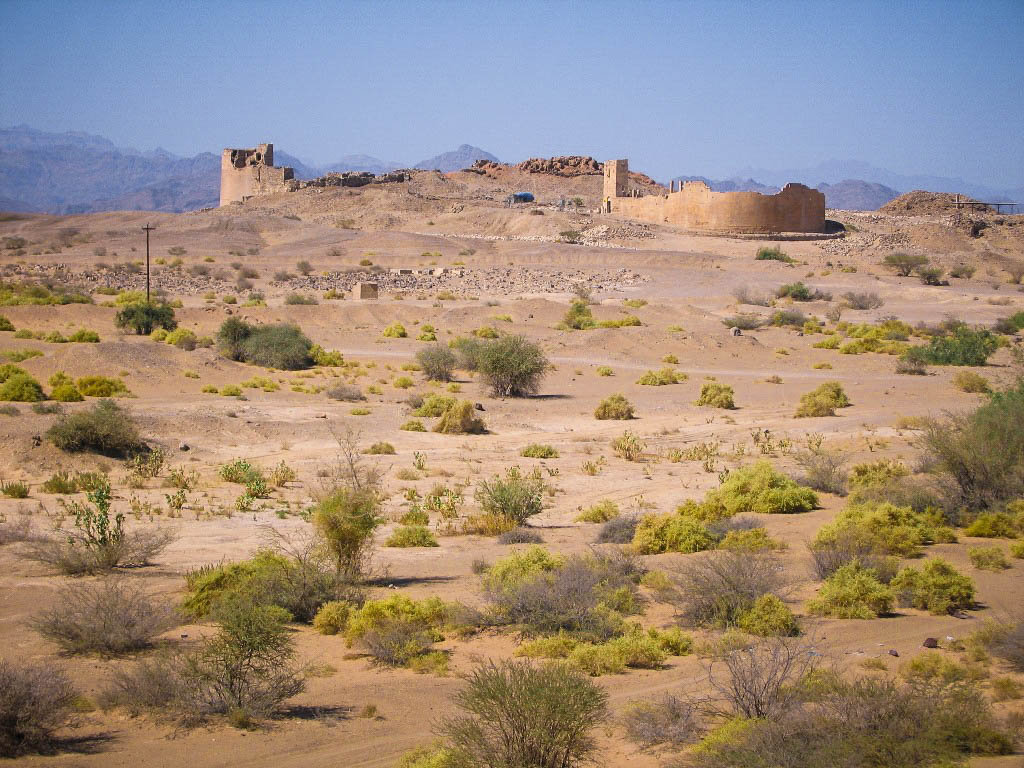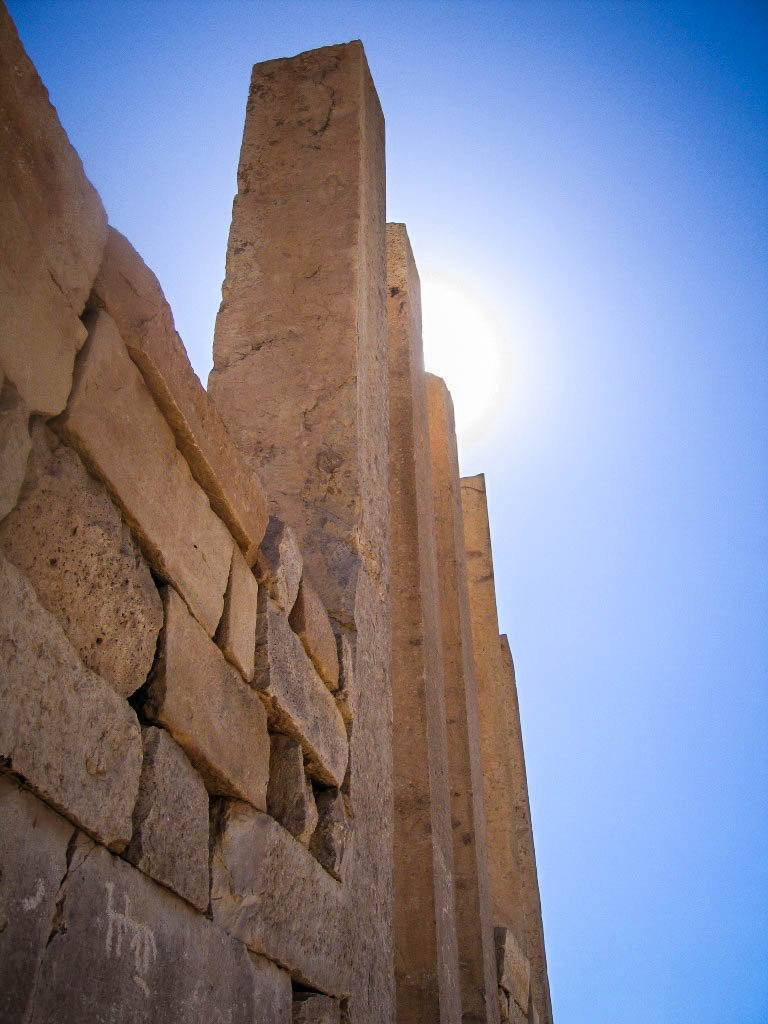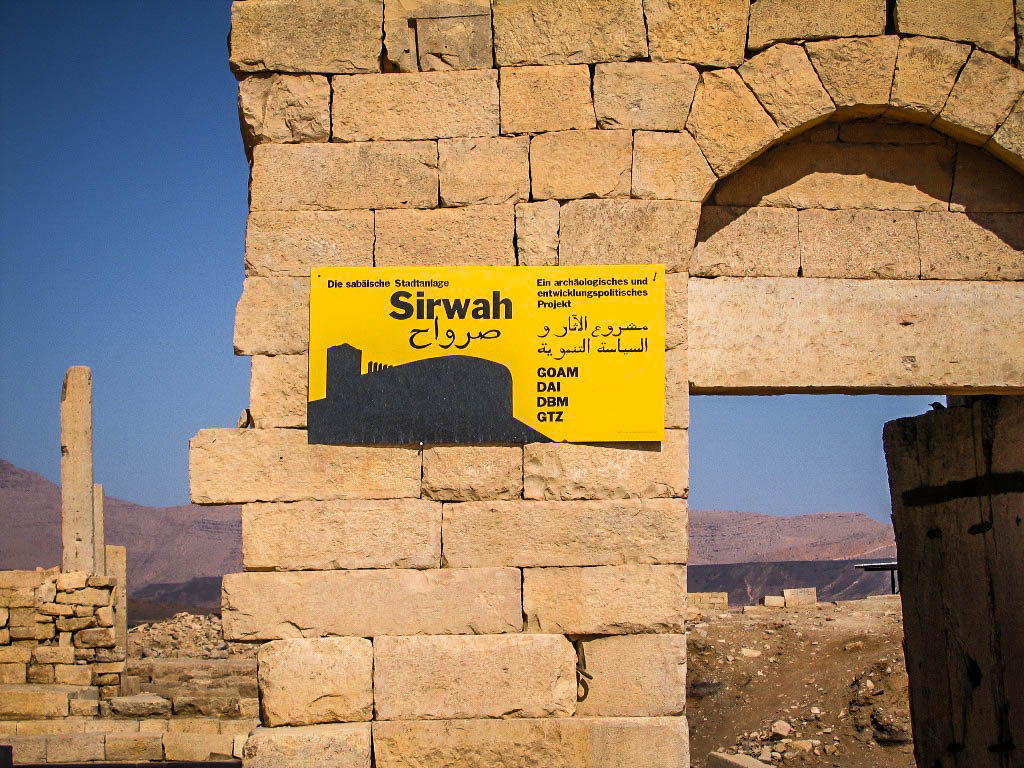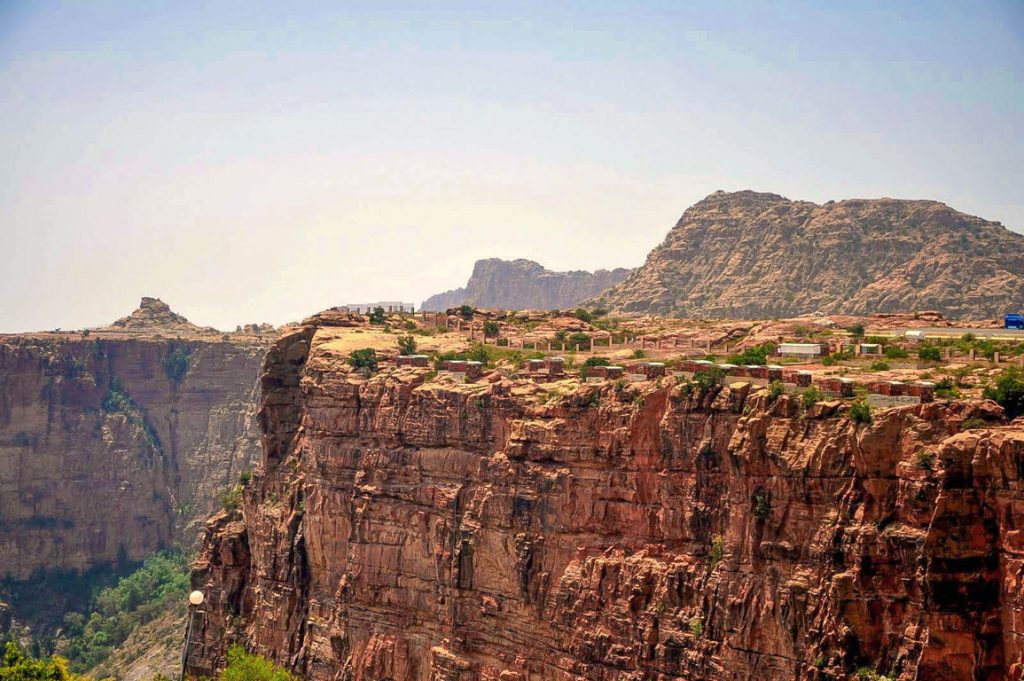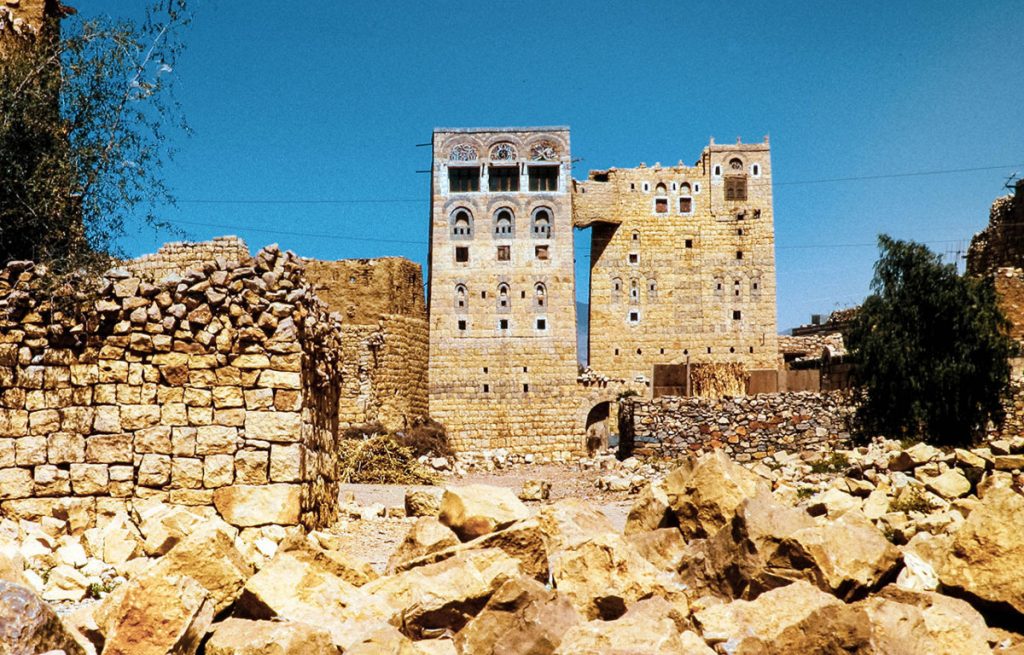Ma’rib, Yemen
Coordinates: 15.451965, 45.018606
Nearby Places
- Ma’rib Dam (Unesco, tentative) 24.87 Km E (104°)
- Bar’an Temple complex (معبد بران) 35.26 Km E (98°)
- Temple of Awwam 36.56 Km E (98°)
History
The ruins of Sirwah are located 40 km west of Ma’rib. Its position in the mountains well protected the town, but at the same time put limits on its development. As a result, Sirwah quickly lost its status as a capital taken over by Ma’rib, which was in an essential economic center since it was located on the incense route.
However, it was a significant trading post on the incense route that connected Arabia and East Africa, the second-largest Sabaean settlement, and its pre-eminent religious center. The town nevertheless remained an important center for the Sabaeans, as shown by many temple buildings.
It was also the site chosen by King Yada’il Dharih I to build an essential temple to Almaqah about 700 BC. The kingdom of Saba (biblical Sheba) existed from approximately 1000 BC to AD 290, first as the leading power in the south of the Arabian Peninsula and later in constant conflict with other emerging south Arabian kingdoms. The Sabaeans have left us a wealth of architectural wonders, including the Great Dam of Marib, built in the eighth to the seventh century BC and one of the most extraordinary architectural projects of the ancient world, and numerous temples.
Temple of Sirwah
The main temple in Sirwah was dedicated to the Sabaean god Almaqah, whose epithet in Sirwah was ‘Ba’al Awa’el’, or ‘master of the ibexes’. For some reason, the temple is commonly referred to by locals as ‘Qasr Bilquis’ (Bilquis’ castle).
Bilquis is the name given by the Arabs to the biblical and quranic Queen of Sheba, who visited Solomon in Jerusalem, accompanied by camel-loads of incense and myrrh, in which the kingdom traded. According to scholars, this probably took place around 950 BC. The origins of the name Bilquis remain a mystery. It has not yet been found on any of the thousands of Sabaean inscriptions known to archaeologists.
Archaeology
Archaeologists from the German Archaeological Institute have since 2005 discovered and salvaged an inscription from the Sabaean Kingdom over seven meters long. This seven-tonne massive block of stone was a standing feature of the sanctuary of Almaqah and had fallen from its plinth during an earthquake. The epigraphist Norbert Nebes from the University of Jena described the inscription as the most important one so far from the first century BC.
The legend gives an account of the battles of a Sabaean, carried out against his immediate neighbors in the south-east and north of Yemen. Altars and banquet areas have also been found on the temple site and bone deposits of sacrificial animals and hundreds of votive offerings. In the wall surrounding the temple, which was part of the city wall simultaneously, its tower was well-preserved – until recently, at least.
Aftermath of civil war
Since the breakout of civil war in Yemen in 2015, Sirwah has been a frontline between the Houthi rebels and forces allied with President Abdrabbuh Mansur Hadi,[2] making excavations,
Some restorative work was undertaken on these sites before the breakout of the Yemeni Civil War. During these works, a further temple was discovered dating back to the 7th century BC. This sanctuary has a monumental entrance, decorated with pillars. It contains several rooms, built out of wood and stone; the layout is unique for Yemen in this period. One of the longest inscriptions composed of 20 lines describes the conquerors and campaigns by king Karib’il Water.
There is particular concern about Sirwah’s central tower, which has been hit hardest by the explosions, and a now cracked inscription dating back to the seventh century BC. Damage has also been inflicted on a row of carved ibexes on the outside of its temple wall, some of which has fallen down, and its pillars have been hit by shrapnel. These structures had withstood the centuries, but rockets destroy in seconds what nearly three millennia could not. Even if restoration can save the tower from collapsing, it is far from certain, since airstrikes are ongoing – irreparable damage has been done.
The downfall of the kingdom
Sirwah was deserted after the Sabaean kingdom ceased to exist around 290 AD after being defeated by the Himyarites, a powerful Semitic tribe from the south, which united the whole of ancient Yemen under their rule towards the end of the fourth century AD, just as the Sabaean Karib’ il Water had done centuries before. Never has Sirwah been so endangered as it is now.
Sources
Image Sources
4536900708_11b6550b77_k
Salah Al-Khirbash
https://www.flickr.com/photos/46407563@N07/4536900708/in/photolist-mTApp6-SJWa3-4MMgZQ-mTB25x-V5yybW-2jghWS6-7UUNw1
Jemen_Sirwah_04
By Kmatura – Own work, CC BY-SA 3.0, https://commons.wikimedia.org/w/index.php?curid=11015105
Jemen_Sirwah_02
By Kmatura – Own work, CC BY-SA 3.0, https://commons.wikimedia.org/w/index.php?curid=11015084
Jemen_Sirwah_03
By Kmatura – Own work, CC BY-SA 3.0, https://commons.wikimedia.org/w/index.php?curid=11015097
Jemen_Sirwah_01
By Kmatura – Own work, CC BY 3.0, https://commons.wikimedia.org/w/index.php?curid=11015076


